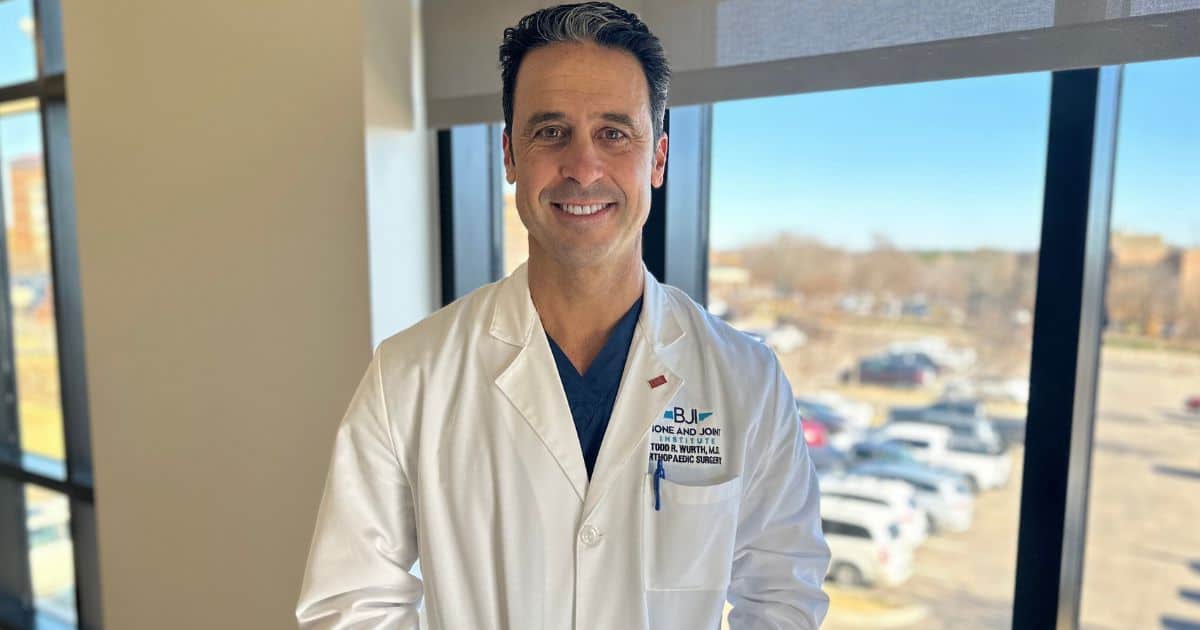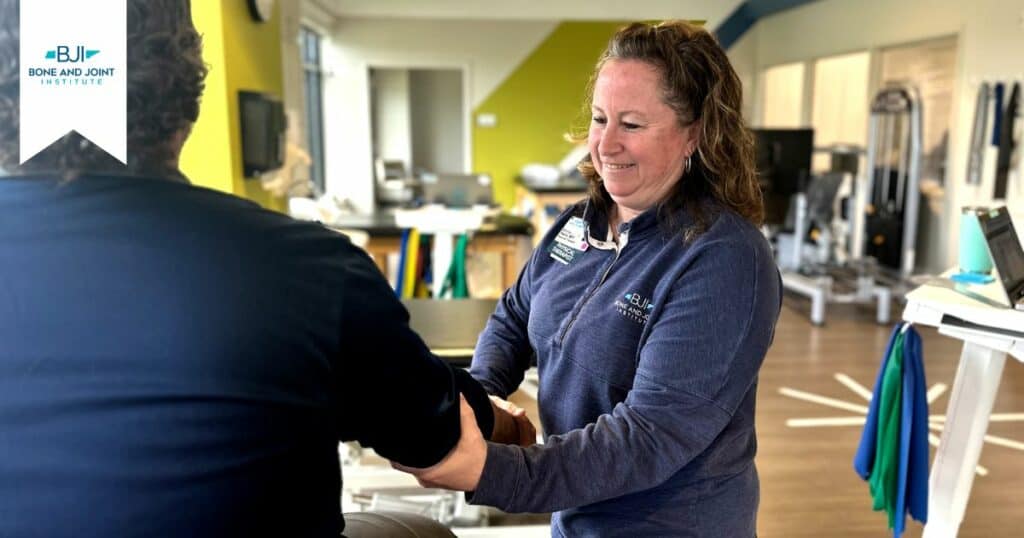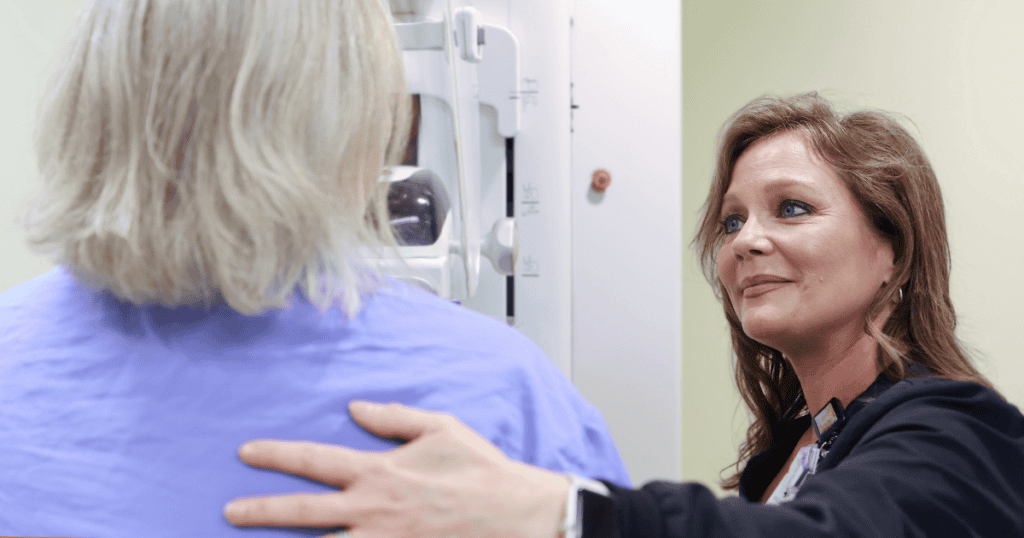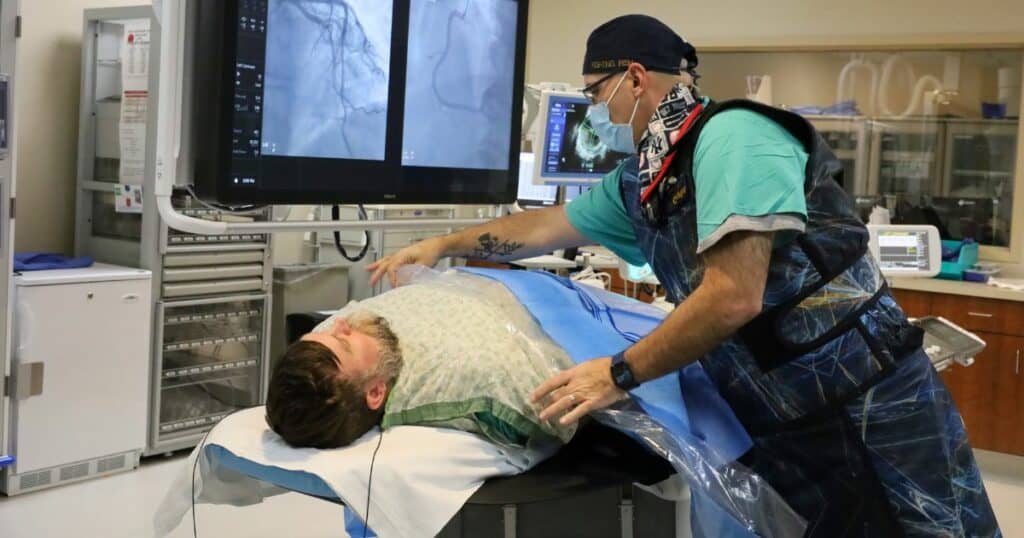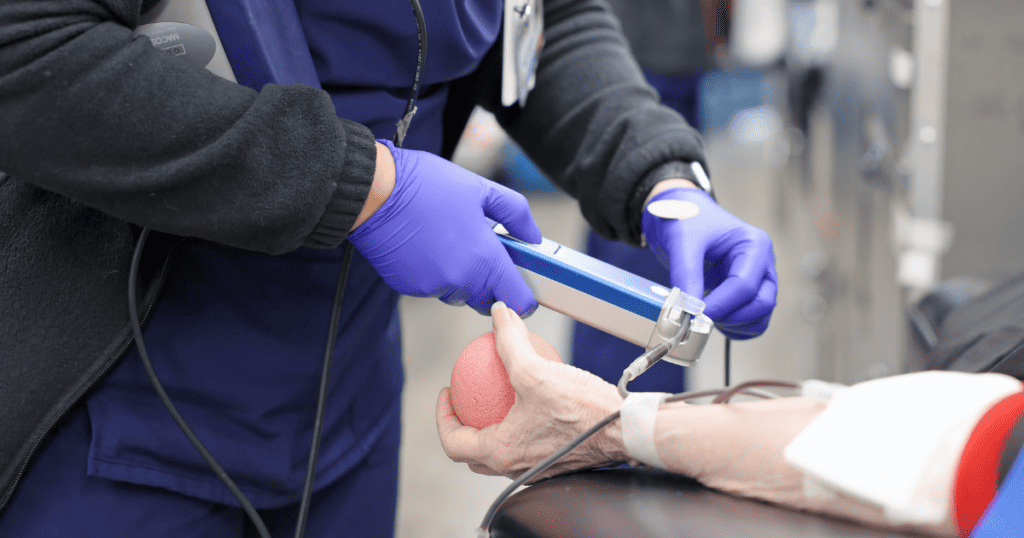Shoulder Injuries Across Various Age Groups with Dr. Todd Wurth
Published: February 29, 2024
Originally published in the Williamson Herald —
Whether you’re prepping for your senior season of high school tennis or kicking off retirement with a golf trip, it’s important to be mindful of the risks associated with staying active. Dr. Todd Wurth, orthopaedic surgeon at Bone and Joint Institute of Tennessee, provides insight on how shoulder injuries can affect all age demographics and offers best practices on staying healthy.
With competitive swim season ending and spring sports like tennis and baseball on the horizon, the risk of shoulder injuries in high school athletes increases.
“In these sports, we mainly see shoulder injuries from overuse or instability,” said Dr. Wurth. “Competitive swimmers rely on a large range of motion that can sometimes lead to looseness in the joint and rotator cuff irritation.”
Shoulder pain in younger tennis and baseball players most commonly arises from growth plate irritation, rotator cuff irritation or labral injury. These can most common be treated with rest/rehab with surgical intervention reserved for persistent symptoms.
Unfortunately, the risk of injury only increases with age.
“The older we get, the more likely we are to experience a shoulder injury,” said Dr. Wurth. “We are more flexible in our youth, but our joints start to stiffen as we approach our mid-20s. Men start to lose joint flexibility in their early 20s while women maintain flexibility slightly longer.”
However, Dr. Wurth encourages athletes of all ages to stay active year-round to avoid excess strain and inflammation in the shoulder when picking up a new sport. He advised stretching every day and maintaining a good exercise routine to promote shoulder mobility. Incorporate a rotator cuff program into your routine two to three times a week, focusing on proper form and using the appropriate weight.
“The rotator cuff is made up of four muscles and tendons. If you don’t use them, they will not work efficiently,” said Dr. Wurth. “It’s important to maintain strength to reduce the risk of symptoms.”
Even if you are taking the right precautions, some conditions are inevitable. As we age, old injuries can have lingering effects which can cause post traumatic arthritis or chronic pain. Other conditions include osteoarthritis, which is general wear and tear of the joints, and inflammatory arthritis where the immune system attacks the joints.
Left untreated, arthritis of any kind ultimately result in the need for a shoulder replacement. However, the providers at Bone and Joint Institute can assess each patient’s needs and recommend a tailored treatment plan.
“I use CT-guided navigation to get a 3D rendering before surgery,” said Dr. Wurth. “This technology allows me to accurately place the implant to maintain its function and extend the longevity of it.
Shoulder replacement methods will vary based on the patient’s assessment. This could include replacing the entire joint with a standard metal and plastic implant or a reverse shoulder replacement which allows the joint to move without the need for a functioning rotator cuff if needed.
Post operation, patients can expect to be in a sling approximately six weeks. During that time, both rotator cuff surgery and shoulder replacement patients will work with trained physical therapists on passive range of motion followed by active range of motion and strengthening for the shoulder. For the shoulder, patients are usually cleared to resume daily activities in just a few months.
“Rehab is about maintaining motion to reduce stiffness in the joint while protecting the repair,” said Dr. Wurth. “Some small rotator cuff tears or injuries can be rehabbed without the need for surgery.”
Dr. Wurth urges patients to listen to their bodies. If you are experiencing persistent pain, make sure to get an evaluation from the providers at Bone and Joint Institute. The experienced providers will exhaust all non-invasive treatment methods first, such as anti-inflammatories, physical therapy, activity modifications and even cortisone injections.
“We think it’s important to be mindful of each patient throughout his or her entire life when assessing a shoulder injury,” said Dr. Wurth. “Every patient at Bone and Joint Institute can rest assured that they are receiving quality care that meets their specific needs, regardless of age.”
For more information or to schedule an appointment, click here.
Shoulder Injuries Across Various Age Groups with Dr. Todd Wurth
Originally published in the Williamson Herald —
Whether you’re prepping for your senior season of high school tennis or kicking off retirement with a golf trip, it’s important to be mindful of the risks associated with staying active. Dr. Todd Wurth, orthopaedic surgeon at Bone and Joint Institute of Tennessee, provides insight on how shoulder injuries can affect all age demographics and offers best practices on staying healthy.
With competitive swim season ending and spring sports like tennis and baseball on the horizon, the risk of shoulder injuries in high school athletes increases.
“In these sports, we mainly see shoulder injuries from overuse or instability,” said Dr. Wurth. “Competitive swimmers rely on a large range of motion that can sometimes lead to looseness in the joint and rotator cuff irritation.”
Shoulder pain in younger tennis and baseball players most commonly arises from growth plate irritation, rotator cuff irritation or labral injury. These can most common be treated with rest/rehab with surgical intervention reserved for persistent symptoms.
Unfortunately, the risk of injury only increases with age.
“The older we get, the more likely we are to experience a shoulder injury,” said Dr. Wurth. “We are more flexible in our youth, but our joints start to stiffen as we approach our mid-20s. Men start to lose joint flexibility in their early 20s while women maintain flexibility slightly longer.”
However, Dr. Wurth encourages athletes of all ages to stay active year-round to avoid excess strain and inflammation in the shoulder when picking up a new sport. He advised stretching every day and maintaining a good exercise routine to promote shoulder mobility. Incorporate a rotator cuff program into your routine two to three times a week, focusing on proper form and using the appropriate weight.
“The rotator cuff is made up of four muscles and tendons. If you don’t use them, they will not work efficiently,” said Dr. Wurth. “It’s important to maintain strength to reduce the risk of symptoms.”
Even if you are taking the right precautions, some conditions are inevitable. As we age, old injuries can have lingering effects which can cause post traumatic arthritis or chronic pain. Other conditions include osteoarthritis, which is general wear and tear of the joints, and inflammatory arthritis where the immune system attacks the joints.
Left untreated, arthritis of any kind ultimately result in the need for a shoulder replacement. However, the providers at Bone and Joint Institute can assess each patient’s needs and recommend a tailored treatment plan.
“I use CT-guided navigation to get a 3D rendering before surgery,” said Dr. Wurth. “This technology allows me to accurately place the implant to maintain its function and extend the longevity of it.
Shoulder replacement methods will vary based on the patient’s assessment. This could include replacing the entire joint with a standard metal and plastic implant or a reverse shoulder replacement which allows the joint to move without the need for a functioning rotator cuff if needed.
Post operation, patients can expect to be in a sling approximately six weeks. During that time, both rotator cuff surgery and shoulder replacement patients will work with trained physical therapists on passive range of motion followed by active range of motion and strengthening for the shoulder. For the shoulder, patients are usually cleared to resume daily activities in just a few months.
“Rehab is about maintaining motion to reduce stiffness in the joint while protecting the repair,” said Dr. Wurth. “Some small rotator cuff tears or injuries can be rehabbed without the need for surgery.”
Dr. Wurth urges patients to listen to their bodies. If you are experiencing persistent pain, make sure to get an evaluation from the providers at Bone and Joint Institute. The experienced providers will exhaust all non-invasive treatment methods first, such as anti-inflammatories, physical therapy, activity modifications and even cortisone injections.
“We think it’s important to be mindful of each patient throughout his or her entire life when assessing a shoulder injury,” said Dr. Wurth. “Every patient at Bone and Joint Institute can rest assured that they are receiving quality care that meets their specific needs, regardless of age.”
For more information or to schedule an appointment, click here.
Published: February 29, 2024
